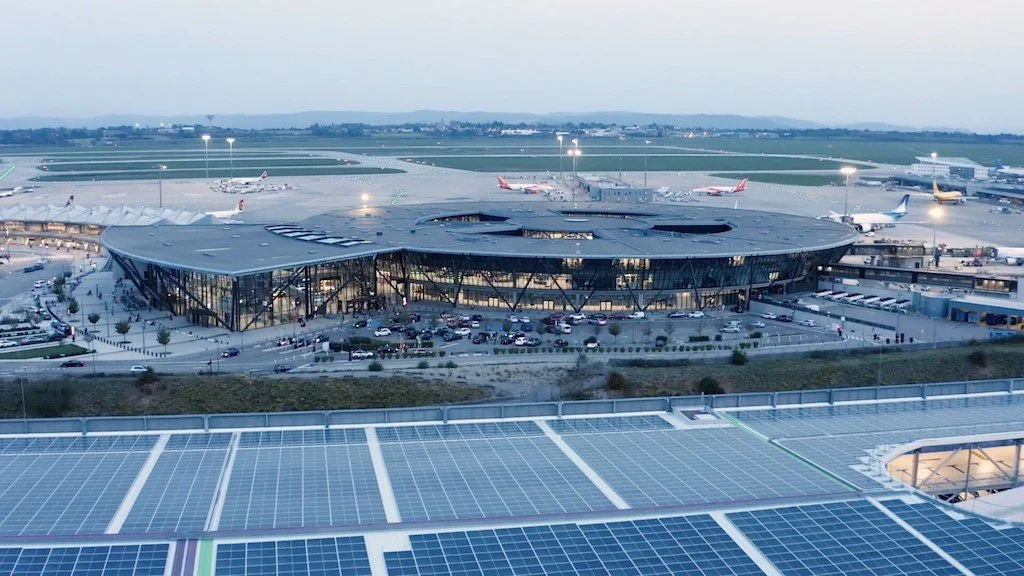Lyon airport achieves direct scope net zero with other VINCI airports set to follow
VINCI Airports has announced that Lyon-Saint Exupéry Airport (LYS) has achieved net zero carbon emissions within its direct scope of activities, becoming the first airport in France with over 10m passengers to reach this milestone.
Since VINCI Airports took over operations in 2016, Lyon Airport’s environmental action plan has led to a 94% reduction in direct CO₂ emissions (Scopes 1 and 2) between 2013 and 2024.
VINCI Airports operates more than 70 airports across 14 countries. It aims to achieve net zero emissions for its direct activities by 2030 within the EU and the UK where it operates London Gatwick, Edinburgh and Belfast International, and by 2050 globally.
Notably carbon reductions at Lyon have been achieved following the airport introducing solar power for self-consumption, converting entirely to LED lighting, and using 100% renewable electricity with guarantees of origin. For heating, the airport has fully switched to biogas and uses heat recovery from co-generation production.
In addition, optimisation and electrification of the vehicle fleet have reduced fuel emissions, while improvements in air-conditioning management and equipment have minimised refrigerant fluid leaks.
Vinci says the airport reached its 2026 net zero emissions target a year early. It plans to maintain this achievement by keeping emissions below 500t of CO₂ equivalent per year, offsetting residual emissions through local reforestation projects certified under the Low Carbon Label. These projects, launched in partnership with the Rhône Department and the National Forestry Office.
Lyon Airport’s ACA5 certification recognises both the reduction of its direct emissions and its leadership in helping stakeholders decarbonise their own activities under Scope 3.
VINCI Airports has introduced several initiatives to support this effort. Its 25 MWp (MegaWatt peak, ie the rated capacity, not their average or continuous output). solar farm will soon be fully operational photovoltaic, with 20 MWp supplying nearby communities and 5 MWp for self-consumption, avoiding nearly 1,600t of CO₂ annually.
The airport has also inaugurated its first hydrogen refuelling station, Hympulsion, for light vehicles in partnership with the Auvergne-Rhône-Alpes Region. Further plans include 850 electric vehicle chargers by 2026, landing fee modulation to encourage lower-emission aircraft, and the introduction of sustainable aviation fuel distribution from 2025 under the ReFuel EU regulation. In early 2025, partnerships were signed with H2V and Hy2gen for local production and supply of synthetic SAF.
Nicolas Notebaert, Chief Executive Officer of Concessions at VINCI and President of VINCI Airports, said, “In the air transport sector, our commitment is total, not only within our own sphere of activity, but also with our various stakeholders. With 60 airports accredited to the Airport Carbon Accreditation (ACA) programme, including five airports at the maximum ACA 5 level (in France and Portugal), VINCI Airports is the leading international contributor to the ACI (Airports Council International) ACA programme.”


